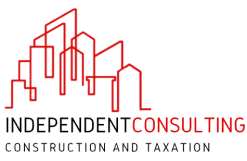What's a Depreciating Asset?
A depreciating asset is something that loses value over time and has a limited useful life. Examples include computers, furniture, and vehicles. However, land and trading stock don't qualify as depreciating assets. Some intangible assets like in-house software and certain intellectual property are counted as depreciating assets. Improvements to land or fixtures on land, such as buildings and fences can be depreciating assets too.
The annual depreciation expense is calculated by dividing the cost of the asset by its estimated useful life. This reduces the book value of the asset and allows the loss to be claimed against business/property income.
There are multiple methods for calculating depreciation, including prime cost, diminishing value, and low-value pool. The appropriate method to use depends on the asset and tax planning. Depreciation is essential because it accurately accounts for asset cost and value on the business balance sheet, and it provides a significant tax benefit.
From July 2017, if you're not using a residential rental property for the business of letting rental properties, you can't claim deductions for the decline in the value of certain second-hand depreciating assets unless you're an excluded entity. This only applies to assets acquired after 9 May 2017 and those used for private purposes in 2016-17 or earlier.
What is a Property Depreciation?
Property depreciation is an important aspect of investing in real estate. It offers a valuable tax break that allows investors to offset the loss in asset value of their investment property from their taxable income. This tax relief can significantly reduce an investor's tax burden, providing them with more financial flexibility.
Two types of claims fall under property depreciation: the capital works allowance and plant and equipment depreciation. The capital works allowance revolves around the value of the property's structure (building), while plant and equipment depreciation covers the value of removable items such as cook-tops, carpets, and blinds.
In Australia, investors can claim tax deductions on both the decline in the value of the building's structure and permanent fixtures, as well as the decline in the value of plant and equipment assets. These deductions are not only a great way to save on taxes, but they are also non-cash deductions, meaning that they do not require investors to pay for them on an ongoing basis.
Building depreciation is the allocation of the cost of building construction over its useful life. It is a form of depreciation used to account for wear and tear, obsolescence, or other factors that cause a building's value to decrease over time.
The cost of a building includes the cost of constructing, improving, or renovating. To calculate building depreciation, divide the total cost of building works by its useful life.
The useful life of a building depends on factors such as age, quality of construction, and the extent to which it has been maintained or renovated over time. In general, buildings have a useful life of 25 to 40 years, depending on the building's construction date, type, and industry.
Building depreciation is an essential deduction that increases cash flow by reducing taxable income and therefore reducing taxes.
